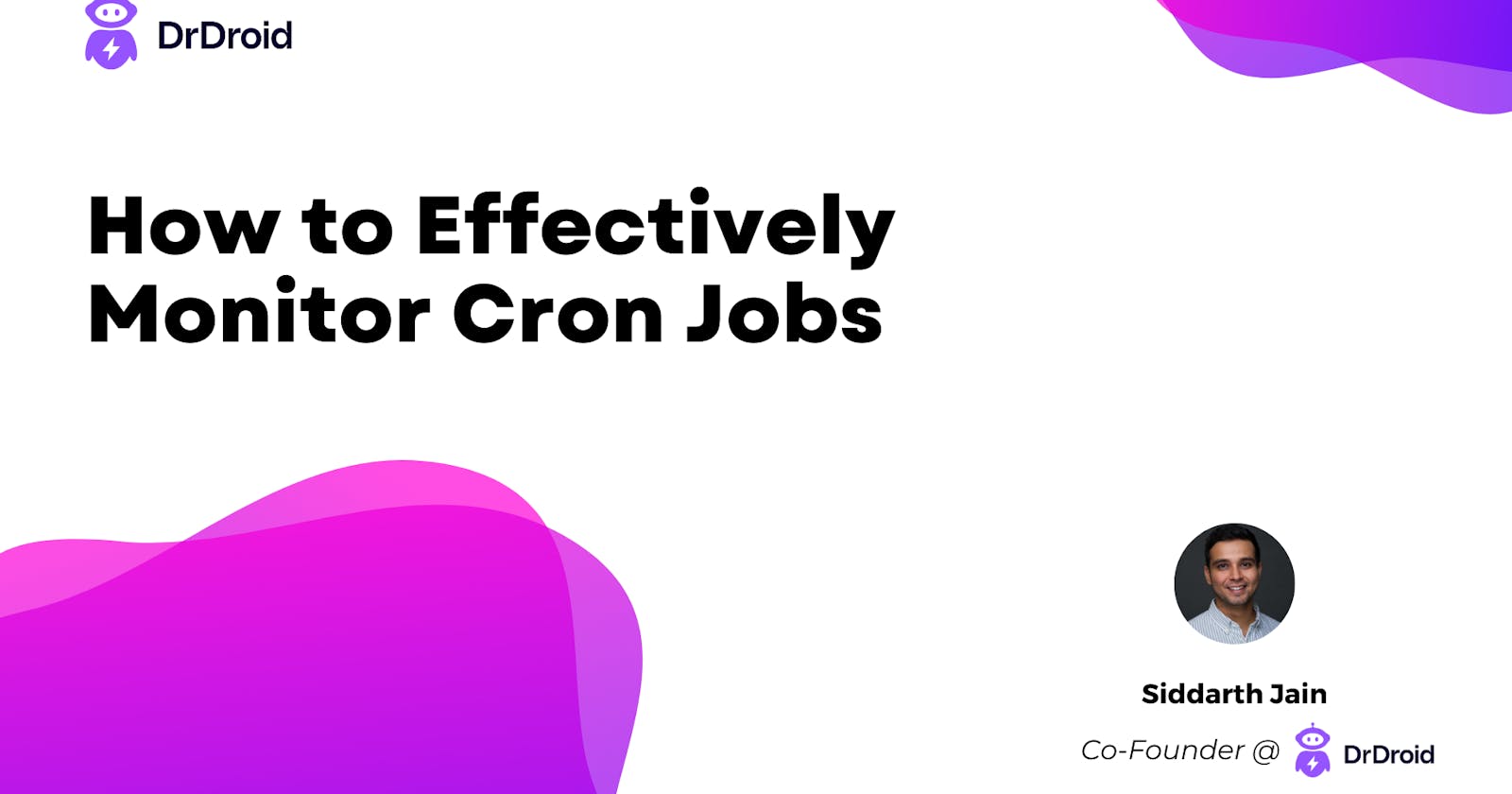Cron jobs are an essential tool for developers who want to automate recurring tasks such as sending emails, running backups, and cleaning up log files. However, managing cron jobs can be challenging as they run in the background, making it difficult to troubleshoot and monitor their activities.
In this article, we'll look at some examples of cron jobs and how Dr Droid simplifies the process of monitoring, making it easier to manage cron jobs.
Some Examples of Cron Jobs
Cron scheduling is one of the oldest and most popular techniques since the introduction of UNIX. Many sysadmins, DevOps engineers, and Operations teams use it on a daily to schedule their tasks. Some of the examples are —
Databases: Automating regular backups, killing long-running queries, and generating reports using Cron jobs.
App management: Automating app backups and administrative tasks using cron jobs can help save time and reduce human error in managing the application. This ensures that tasks are executed regularly and efficiently, resulting in better performance of applications.
Rotating log files: To prevent server failures and downtime, it's essential to automate log file rotation. This involves taking regular backups of log files and creating new ones to minimize the risk of running out of disk space.
Scheduling Business Processes: Automating business processes, batch processing, etc using cron jobs, can save time and reduce the risk of human error. Examples of such business processing include payment disbursement, report generation, etc.
Typical Problems with Cron Jobs
Delays
If a cron job takes longer than expected to execute, it can cause a pile-up in the queue, which can result in subsequent jobs not running on time. This can lead to further delays.
Erroneous Execution
There can be scenarios where a job does not end and will wait forever to get the response until the server restarts or someone manually kills the job. Examples include infinite loop or condition which prevents proper termination or hung command in the job. Such jobs can consume more resources of the server and thus, affect other core business applications running on the same server.
Operational Maintenance
Cron jobs that are no longer needed can accumulate causing performance issues. To avoid this, it’s important to review and clean up those jobs regularly.
How to Effectively Monitor and Manage Cron Jobs using Dr Droid
Monitoring cron jobs is a crucial task that ensures the smooth functioning of systems and processes. Failing to monitor them can result in potential downtime, data loss, or suboptimal resource usage. For example, cron jobs can execute important tasks that require timely and accurate completion, and regular monitoring can help detect failures quickly, optimize their scheduling, and trigger alerts.
One effective tool for monitoring cron jobs is Dr Droid. It offers a stateful approach to monitoring the health of your cron jobs, enabling you to set up monitors that alert you to failures or delays. By using Dr Droid, you can address the problems mentioned above and ensure the uninterrupted and optimal performance of your systems and processes.
How does it work?
In the cron job script, you can send some events via REST API from the job to Dr Droid. When a cron job runs, it sends an event to Dr Droid to notify it of its status such as scheduled, started, and completed.
Fig 1: Creating events cronjob_initiated and cronjob_completed
The scheduled event for the cron job can be taken from the crontab configuration, which specifies the exact time and date when the job should run. Dr Droid can use this information to monitor the status of cron jobs.
However, if the cron service itself is broken, it can be challenging to detect issues using this approach. In such cases, Dr Droid may not receive the expected notifications, and it may be necessary to manually check the configuration.
Dr Droid can be used to monitor the average runtime of cron jobs and to send alerts if a job takes longer than expected.
In the dashboard, we can set up triggers for specific events, such as when a primary event (or any cron task) takes longer than expected to complete, causing a delay in a secondary event (another cron task). At that point, we can take action to resolve the delay.
Fig 2: Setting up Triggers
We can set up actions like sending alerts via Email or we can even configure webhook calls.
Fig 3: Setting up Actions
Product walkthrough
Summary
I hope you have learned the importance of monitoring cron jobs and how tools like Dr Droid monitor cron jobs and help developers ensure that their applications continue to run effectively.
Do let us know through comments, how you monitor the cron jobs. We will be happy to learn about your use case.
Sign up for Dr Droid today - it's free up to 1M events/month!

